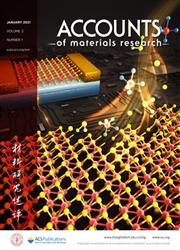The Fundamentals for Efficient Non-oxidative Propane Dehydrogenation over ZrO2-Based Catalysts
IF 14.7
Q1 CHEMISTRY, MULTIDISCIPLINARY
引用次数: 0
Abstract
The activation of C–H bonds in light alkanes efficiently is a challenging yet crucial aspect of heterogeneous catalysis. This process is essential for converting abundant hydrocarbon feedstocks into valuable products. The non-oxidative propane dehydrogenation to propene (PDH) has attracted widespread attention due to the presence of cheap propane in shale and has become the basis of an important on-purpose technology to bridge the gap between propene production and demand. It is also an important model reaction for studying the fundamentals of C–H bond activation. Compared to traditional oil-based cracking processes, the PDH reaction has the following advantages: (1) abundant propane recourses, mainly from shale gas and refinery plants, (2) high selectivity to propene (above 90%), and (3) the composition of the products is simple and easy to separate. Currently, commercial PDH processes rely on the Catofin and Oleflex technologies developed by CB&I Lummus and UOP Company, which apply PtSn/γ-Al2O3 and K–CrOx/γ-Al2O3 catalysts, respectively. However, Pt-based catalysts are expensive and Cr(VI)Ox-based catalysts are toxic, limiting their application to a certain degree. Therefore, the search for environmentally friendly and cost-effective PDH catalysts has become a key topic of ongoing research.

基于zro2的催化剂高效非氧化丙烷脱氢的基本原理
轻烷烃中碳氢键的有效活化是多相催化的一个具有挑战性但又至关重要的方面。这一过程对于将丰富的碳氢化合物原料转化为有价值的产品至关重要。由于页岩中存在廉价丙烷,非氧化丙烷脱氢制丙烯(PDH)技术引起了广泛的关注,并已成为弥补丙烯生产与需求缺口的重要基础技术。它也是研究碳氢键活化原理的重要模型反应。与传统的油基裂化工艺相比,PDH反应具有以下优点:(1)丙烷资源丰富,主要来自页岩气和炼油厂;(2)对丙烯的选择性高(90%以上);(3)产物组成简单,易于分离。目前,商业化的PDH工艺依赖于cb&&i Lummus和UOP公司开发的Catofin和Oleflex技术,它们分别使用PtSn/γ-Al2O3和K-CrOx /γ-Al2O3催化剂。但pt基催化剂价格昂贵,Cr(VI) ox基催化剂毒性大,在一定程度上限制了其应用。因此,寻找环境友好、经济高效的PDH催化剂已成为当前研究的重点课题。
本文章由计算机程序翻译,如有差异,请以英文原文为准。
求助全文
约1分钟内获得全文
求助全文

 求助内容:
求助内容: 应助结果提醒方式:
应助结果提醒方式:


